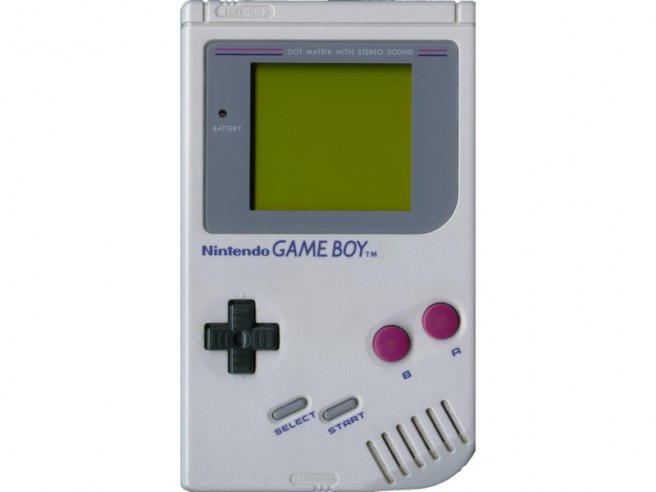Details on how Nintendo planned for Game Boy’s stateside release, Tetris as the pack in game, bringing Pokemon west
Polygon published a lengthy feature today all about the Game Boy. It looks into how Nintendo planned for the system’s release in North America, including comments from former marketing manager Don Coyner. There’s also insight into how Tetris became the pack-in game and bringing Pokemon west.
Here’s a roundup of what was shared:
– Coyner suggested changing the name, but Nintendo of America president Minoru Arakawa said that wasn’t going to happen
– Arakawa said he wanted to spend like $20 million on marketing, since he wanted “to turn up the heat”
– Arakawa wanted Nintendo’s advertising to generate demand for the Game Boy’s first Christmas season that exceeded its supply
“If somebody has to go to a couple of stores and they can’t find it, but then they find it in the third store, that was sort of perfect. Because it created just enough excitement and demand for games and for systems.”
– Advertising targeted nine to 14 year-old boys
– Also tried marketing that appealed to the sort of 15 to 16 year-old
– Adults and girls were considered a secondary market at launch
– The focus was making it seem cool to boys through TV advertising
– Tough to shoot commercials because the Game Boy didn’t have a backlit screen
– This resulted in NoA adopting a rapid-cutting style – tiny snippets of games mixed with a barrage of edgy voiceover, side and rear-angled shots of Game Boys in use, and over-the-top dramatization
– Almost all marketing money spent on TV ads
– The rest was mainly distributed between initiatives connected to Nintendo Power and point of sale displays
– All of Nintendo’s marketing typically centered around one focal point, one standout game for each system
– Nintendo initially planned on including Super Mario Land with every sale of Game Boy in North America
– Bullet-Proof Software founder Henk Rogers thought it would be perfect for the Game Boy
– Rogers hired Robert Stein to help get the Game Boy rights and paid him $25,000 as an upfront
– Negotiations had to go through Elorg, a Russian government agency responsible for all hardware and software exports that held the copyright
– Rogers heard from Nintendo that somebody else was trying to sell them the Game Boy rights, but convinced them to give him more time
– Rogers was terrified that he was about to lose not only the Game Boy rights that he’d spent months going after, but also the 200,000 cartridges of Famicom Tetris he’d had manufactured with his in-laws’ property as collateral
– Nintendo was on his side, Arakawa flew in with his right-hand man Howard Lincoln to help secure a deal, and Elorg granted them exclusive rights to publish Tetris on handheld systems and consoles
– Rogers told Arakawa that Tetris should be the pack-in so that everyone would buy a Game Boy, not just little boys for Mario; Mario could be sold afterwards
– Arakawa asked Nintendo Power to do a couple of big feature articles on Tetris
– Nintendo produced a million Game Boys for the U.S. in 1989 and sold all of them
– Nintendo of America’s marketing team worried American kids might not have the attention span for a franchise so labyrinthine like Pokemon
“And so quite a bit of time was spent where groups of people – and I would be included in some of that – would look at the game, and think about what could we do with it here? The ad agency came up with a few concepts like, ‘Well, maybe it could be a baseball metaphor. Maybe we should change the look and feel of the characters and go with something very graffiti-like and gritty. And the characters themselves will be much edgier.'” – Nintendo Power founding editor-in-chief Gail Tilden
– They had to localize it, as-is, with English names for the Pokemon that would match the intention of the Japanese version
– Nintendo had to create a brand management effort to centrally manage all of these different parts of the franchise
– Tilden was asked to lead the effort
– She left Nintendo Power and started a new team
– That team made a deal with 4Kids Entertainment to help manage and arrange licensing and merchandise, then the two companies together devised a strategy for introducing Pokemon to the west based on collectability
– The team planned to introduce the TV show first, with Red and Blue following a few weeks after the TV show
– TV networks weren’t interested
– 4Kids had to barter Nintendo’s advertising budget for airtime on local stations
– Nintendo still needed to explain to the audience why Pokemon was great
– Nintendo Power subscribers and others on the mailing list were sent a videotape that explained the franchise plus details on when and how to watch the show
– Nintendo of America’s PR agency, Golin Harris, came up with an idea:
“Their idea was to turn the brand-new Volkswagen beetle into Pikachu, and they would get 10 of them. They had 10 people in yellow flight suits parachute out of a plane in ToPikachu, Kansas – Topeka, Kansas, being renamed ToPikachu – run and get into these yellow Pikachu bugs, and drive [them] around the U.S.”
– Tilden-
– Everywhere they went, they’d hand out promotional material and show the games in action
– Pokemon got fast-food tie-ins and school book cover promotions
– Nintendo spent $15-20 million on a saturation marketing campaign for Pokemon
– Warner Bros. picked up the TV show in February 1999 for national broadcast, whereupon it held the #1 spot in Saturday morning ratings for 14 straight weeks
– Tilden thinks the key to Pokemon’s success was the way its world and concept came together into something magical
You can find even more in the original Polygon article here.
